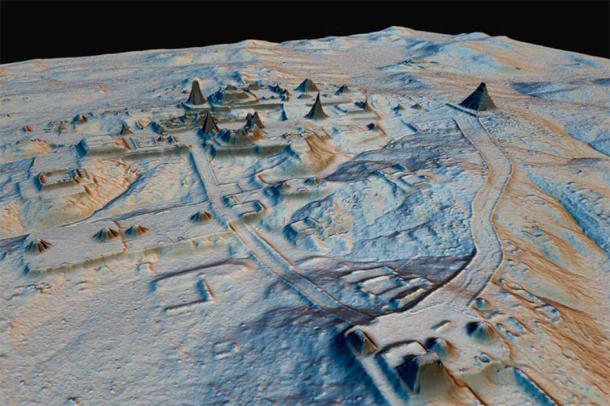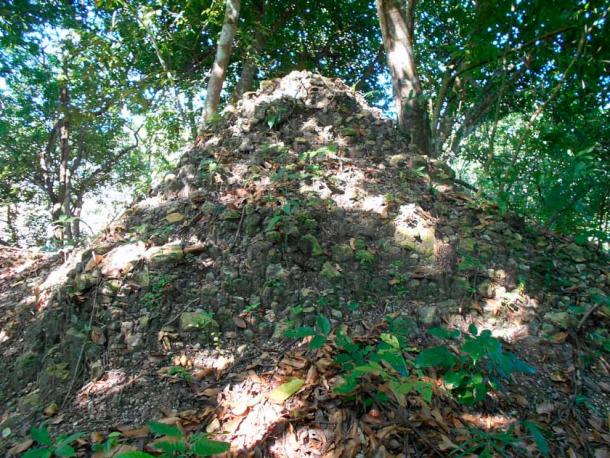
New Discoveries At Guatemala's “Last” Maya City
Archaeologists have been digging at “the last” Maya city in Guatemala. Pre-Hispanic graves and artifacts have been found peppered with the shot from conquistadors’ rifles.
The lush forests of Guatemala’s Petén region lie on the borders of Mexico and Belize. Back in 2019 thousands of Maya structures were revealed by light detection and ranging (LiDAR) sensors and displayed on geographic information system (GIS) maps.
At the time, BBC announced that archaeologists had remapped “over 810 square miles (2,100 sq km) in northern Peten” revealing more than 61,000 Maya homes, highways, temples and pyramids covered by dense trees and vines. Today, the estimated number of Maya once living in the lowlands has sprung from 1 or 2 million people to around 20 million people.
Dr Stephen Houston, Professor of Archaeology and Anthropology at Brown University, said this was “one of the greatest advances in over 150 years of Maya archaeology." Now, archaeologists have announced the discovery of “human burial grounds and bullets from Spanish guns uncovered at the site of the last Mayan stronghold in Guatemala.”
- The Oldest Maya Murals and Royal Violence at San Bartolo, Guatemala
- 2,000-Year-Old Maya Superhighway Discovered in the Jungle of Guatemala

LiDAR image revealing Maya structures beneath the jungle canopy in Guatemala. (Marcello A. Canuto/ Tulane University)
The Island of Most Maya Resistance
The Maya civilization peaked in culture and regional power between 250 and 900 AD in present-day southern Mexico, Guatemala, Belize, El Salvador, and Honduras. Maya first settled in what is today Guatemala during their Pre-classic period (around 900 BC) and began building sprawling cities from which elite classes controlled and taxed the agriculturalists who kept the economic wheels turning.
Last June a team of researchers embarked on a project to better understand a Maya site known as “ Nojpetén” or the “ Tayasal” outpost located in the municipality of Flores, Peten Department, 500 kilometers (310 miles) north of Guatemala City. Located on an island in Lake Petén Itzá, Nojpetén, was the capital city of the Itza Maya kingdom of Petén Itzá, and the last population center to collapse to the Spanish conquistadors.
- Treasures of Mexico: The Mixtec, Aztec & Maya Codices that Survived the Conquistadors
- God’s Devils: The Men Who Conquered South America
What Might Lie Beneath?
Most of the ancient buildings at Tayasal are buried beneath 7 square kilometers (4.34 square miles) of vegetation, around Lake Peten Itza. Among the most prestigious of the buried structures is a 30 meter (98.42 ft) high stone-built acropolis. The Central Acropolis of the ancient Maya city of Tikal was an important residential palace complex and housed Tikal royal families, so one can only wonder what might lie within the Tayasal acropolis?

Remains of a structure on the main plaza at Tayasal. (CC BY-SA 4.0)
The first Spaniards arrived in present-day Guatemala in 1524 AD and their rule would last for the following 300 years. However, it took the conquistadors over a century to penetrate the thick jungles of the western highlands. According to an article in Science Alert, archaeologist Suarlin Cordova, who was in charge of the dig, told AFP that Tayasal was the last Maya city to “resist European conquest” and that it didn’t yield to the invaders until 1697 AD.
The new excavation project at the site of the last Maya city, which began last June, has now uncovered pre-Hispanic human burial grounds and a water well. Furthermore, rare ceramics and bullets from Spanish guns have also been excavated. The burials and ceramics conform with those discovered elsewhere in the city, but the discovery of “Spanish bullets” opens a dark and hitherto unread story book about the conquest of this region.
The City That Wouldn’t Yield
One of the reasons the early Maya founded Tayasal precisely where we find it is because it’s really hard to get to, and therefore less complicated to defend. The taking of this particular city was famously difficult, and the Spanish made several failed attempts. Among the first on record was made in 1541 AD by Hernán Cortés himself, who eventually gave up due to the strong opposition “and how well defended the city was.” It is said Cortés left behind a sick horse ( Tzimin Chac) which the Maya looked after and worshipped. Furthermore, when the horse died the Itza Maya stuffed it and then worshipped its image, creating a new local deity.
So difficult was the city to conquer that history records many subsequent failed attempts. An expedition was launched in 1685 from Belize, which never returned, and so too did quests from the Yucatán in 1691 AD and 1695 AD fall to pieces under the defenses of Tayasal.
But on March 13, 1697 AD the city was finally captured by Martin de Ursúa, who could only take the city with assistance from Spanish artillery ships.
The Spanish rifle shot being unearthed by archaeologists today stands testimony to the century of failed attacks and successful defenses of the last Maya city in Guatemala.
Top image: Looking over the jungle in Peten, Guatemala. Source: Adobe Stock / Xavier
By Ashley Cowie















